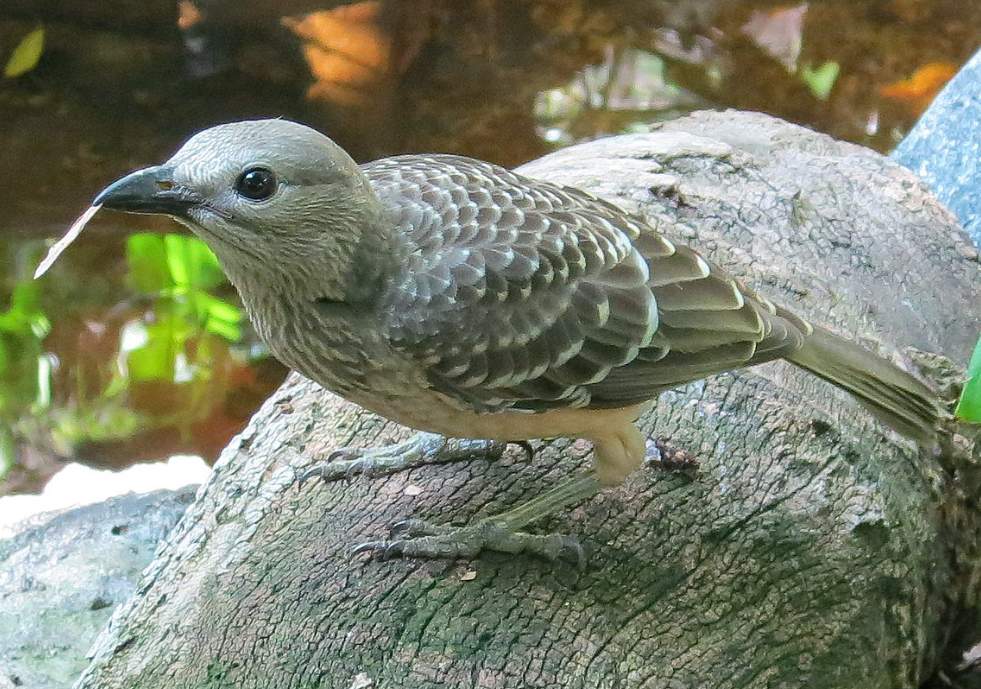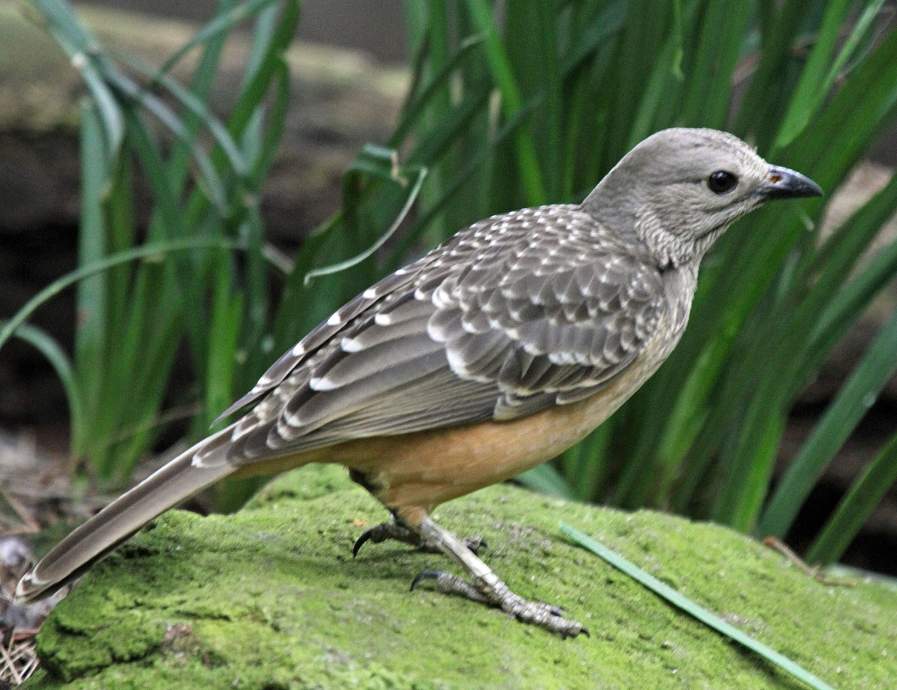Habitat: The fawn-breasted bowerbird (Chlamydera cerviniventris) is widespread through Papua New Guinea’s savannas and restricted in Australia to the east coast of the northern Cape York Peninsula. There, as elsewhere, they live in pockets and galleries of vine forest and mangroves amid grassland and eucalypt woodland. They are sedentary birds and usually solitary, but occasionally band together in small, loose groups of up to 10 to roam locally for food. Groups gather any time of the year in profusely fruiting figs and other food trees to pick fruit and occasional insects, including green tree ants.
Like other members of their genus, they are wiry, frugivorous birds, bounding actively among tree crowns when feeding. They also fly from pocket to pocket of scrub in swooping glides—wings to body—alternating with heavy wingbeats. This dull-plumaged bowerbird builds a complex bower for courting and mating. The bower foundation is a raised, oblong platform of interwoven, crisscrossed sticks with sloping sides. On this is erected a narrow avenue of sticks with upright walls only 80–100 mm apart, barely wide enough for the bird to squeeze between.
The walls are 300–400 mm long and 300 mm high, and they are oriented from north–south to east–west. The platform varies in size but is up to 1,500 mm long, 700 mm wide, and 400 mm high. The bird paints the avenue walls with green vegetable matter, which dries from dull gray to red-brown. The walls and the northwestern end of the platform are adorned with fruits, flowers, and occasional leaves, all of a grey-green or green tone. The male bird builds the bower in a pocket of closed forest or shrubs along the fringes of open grassland or woodland.
Construction and ornamentation begin in April and May, at the start of the monsoonal dry season. They continue until the bower is abandoned in December, at the close of breeding. The next year, another bower was built on the old bower site. It seems that each bower belongs to a single male who attends it constantly, despite the presence of other males and immatures. The arrival of a female at the bower triggers a display by the male. This is a sequence of strained and exaggerated postures, prancing and bounding about the platform and overhanging branches, accompanied by churring and hissing.
It is similar to the displays of the Spotted Bowerbird and the Great Bowerbird, even to the point of flicking and twisting the back of the head towards the female, despite lacking the opalescent lilac bar of those species. It is not known whether the male Fawn-breasted Bowerbird performs peripheral or central displays like other members of its group. However, this seems likely because of the bounding display about the bower and his tendency to restrict himself to the end of the platform facing the avenue. Females enter the avenue, and mating probably takes place there. Each male may mate with any number of itinerant females that leave to nest on their own.

Size: The fawn-breasted bowerbird measures 260–290 mm long.
Identification: Both sexes are similar. The head and neck are gray-brown with faint off-white streaks on the forehead and neck sides. The back and rump are dark gray-brown and scalloped with white. Wings are dark gray-brown with broad white tips on inner flight feathers and wing coverts. Tail dark gray-brown above, paler below, with pale buff tip. Throat and upper breast brown-grey with pale buff streaks; rest of underparts ochre-fawn, sometimes faintly scalloped on breast and barred on flanks. The eyes are dark brown. Bill is black; his mouth is yellow. The feet are gray-brown.
The immature bird is like an adult, but its back and wing coverts are more broadly scalloped with pale buff; the sides of its breast and flanks are sometimes more barred; and its feet are pale gray. Full adult plumage in the second year.
Vocalizations: Fawn-breasted Bowerbird’s call is harsh, rasping contact and alarm churrs; weak, rasping grasshopper-like hisses. Song-displaying males utter harsh, metallic churrings, explosive chatterings, and hisses, and sometimes mimic other birds. Females hiss softly.
Nest and Breed: Nesting and breeding occur in September–December, but also sporadically throughout the year. Nest is a loose, flimsy, shallow cup of roughly interwoven twigs, vine tendrils, and bark strips, lined with fine twigs and rootlets, placed on the fork of a tree, well hidden in deep foliage, 2–10 meters above ground, usually on the edge of clearings, and over 100 meters from the bower. The nest measures 190 x 100 mm. There are usually green-colored berries decorating the bower’s sides, and they are of the “avenue” type.
Eggs and Incubation: Fawn-breasted Bowerbird lays one egg, very rarely two; pale green-olive to cream scrawled all over with umber, purple-grey, and black thread-like lines; about 36×26 mm. Incubation by a female
Distribution: Fawn-breasted Bowerbird found near the edges and pockets of vine, coastal scrub, and mangroves in wooded grassland, on the east coast of Cape York Peninsula south to Silver Plains. Also in New Guinea.
Races: There are no races.
Family: Ptilonorhynchidae







